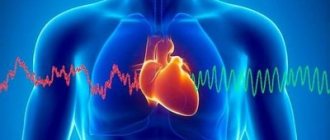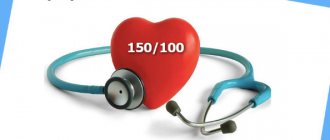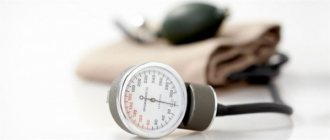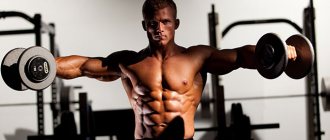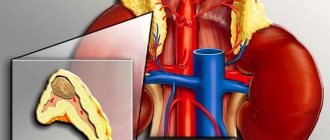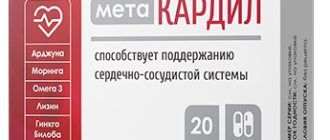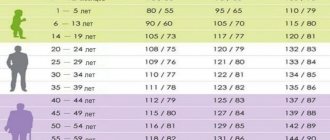One of the additional treatment methods for hypertension is physical therapy, which allows patients to restore their vitality. In combination with conservative treatment and diet therapy, moderate exercise will help normalize blood circulation, cardiac activity, and also reduce the risk of complications. Experts have developed special exercises for hypertension that prevent excessive stress on a weakened body. Before starting physical therapy, patients should familiarize themselves with the methods, indications and contraindications for exercise.
Therapeutic properties of exercise therapy for hypertension
Exercise therapy for hypertension is an effective means of preventing complications typical for the disease. A properly selected complex with a moderate dose of exercise can strengthen the cardiovascular system, as well as reduce the risk of heart attack and stroke.
Before starting sports, it is necessary to establish the stage of the disease and identify concomitant pathologies in order to avoid negative phenomena.
Therapeutic exercise for hypertension has the following beneficial properties:
- stabilization of blood pressure indicators;
- reducing the concentration of cholesterol in the bloodstream;
- acceleration of metabolic processes;
- expansion of the lumen of blood vessels;
- restoration of blood circulation;
- increasing the elasticity of arteries;
- reducing the risk of attacks of arterial hypertension.
Regular exercise leads to strengthening of the vestibular apparatus, resulting in a reduction in attacks of headaches and dizziness. With the help of physical exercises, you can stabilize blood pressure without drugs in the early stages of CVD (heart and vascular diseases).
Most patients are interested in what physical exercises can be done with hypertension in order to achieve a decrease in blood pressure and avoid fatigue. Therapeutic exercises for hypertensive patients should be comprehensive, so it should include general strengthening and special exercises that are indicated for diseases of the heart and blood vessels.
Types of exercise therapy for hypertension:
- Special complex. Includes breathing and relaxation exercises that help smoothly lower blood pressure.
- General complex. It consists of balance and coordination exercises that are performed with a large amplitude, but without pronounced effort. With elevated blood pressure, vestibular disorders are eliminated after a long course.
Massage after exercise
Self-massage helps relax muscles after exercise.
Photo: Racool_studio - ru.freepik.com Dr. A. Shishonin in his works indicates the need to consolidate the effect of gymnastics with the help of self-massage [7]. This procedure additionally warms up the muscles, improves blood flow and oxygen filling of tissues.
But it is important to remember that massage techniques are contraindicated for patients during a hypertensive crisis - the effect on the muscles activates metabolism, and during the procedure you can get the opposite effect - an increase in blood pressure. Also, massage is contraindicated for people with acute inflammatory diseases, skin pathologies, cancer and a number of other pathologies, so the possibility of performing the procedure is determined only by a doctor [7].
The simplest version of self-massage is tapping your knuckles along the neck, kneading the muscles of the shoulder girdle and neck-collar area. With hypertension, all movements must be directed strictly from top to bottom, otherwise a sharp increase in blood flow in the brain structures can lead to the opposite effect - an increase in blood pressure.
Execution Features
At the beginning of the therapeutic course, you should perform simple physical training techniques without excessive stress on the muscular system, which are complemented by breathing and relaxation techniques.
In addition to special physical training, hypertensive patients are recommended to take walks and visit the swimming pool.
At the first stage of hypertension, when well-being improves and tolerance to stress increases, the intensity of exercise gradually increases. Light running and gymnastics are added to the complex, which involve all major muscle groups. A month after the start of exercise therapy, it is performed in full, and the number of repetitions is increased to 8–9 times.
Exercises for stage 2 hypertension become more complicated only after a three-week course. Patients should be careful about heavy loads and avoid running. The number of repetitions increases up to 8 times. And only after a month, on the recommendation of your doctor, you can start running.
No ads 1
In the second and third stages of the pathology, therapeutic exercises can be carried out in a hospital, even when the patient is recommended to rest in bed. Simple exercises are prescribed that involve the muscles of the lower and upper extremities. To train vascular reactions and balance, they resort to the technique of alternately changing the position of the head and neck in space. Breathing techniques can also be performed in a supine position, but to improve pulmonary circulation it is necessary to elevate the upper shoulder girdle.
If your general condition worsens, your heart rate increases to more than 100 beats/min, and does not stabilize after 10 minutes of rest, you should avoid intense exercise and switch to breathing exercises.
Excessive blood pressure response to CST
In addition to establishing an upper BP threshold for exercise cessation, the AHA established an excessive BP response to exercise >210 mmHg. Art. for men and >190 mm Hg. Art. for women, as well as an increase in DBP >10 mm Hg. Art. compared to the resting value or above the value of 90 mmHg. Art., regardless of gender (3). Validation of the systolic criterion appears to be based on data described in a review (52), whereas the criteria for abnormal DBP response arose from a series of studies predicting an increase in resting DBP (53). ACSM currently defines excessively elevated BP as an absolute SBP >250 mmHg. Art. or relative increase >140 mm Hg. Art. (2), however, the source of these values is unknown and the criteria have changed over time. For example, the AHA confirmed the clinical need for excessive BP values but refrained from proposing threshold values (54), whereas previous ACSM recommendations cited systolic and DBP >225 and >90 mmHg as response criteria. Art., respectively (55).
Many studies linking exaggerated BP responses to exercise with latent hypertension have not used recommended thresholds but have used arbitrary thresholds (8, 14, 15, 53, 56 – 59), values >90th or 95th percentile (11 – 59). 13) or the values of people from the top tertile (10, 60). Figure 4 provides a summary of BP thresholds used in previous hypertension-related studies of individuals with excessive BP. To date, the lowest threshold has been established by Jae et al (17) - 181 mmHg. Art. – as the most selective SBP threshold for predicting hypertension in men during a five-year follow-up. Several studies have used magnitude of change rather than absolute value to define excessive BP. Matthews et al (9) used a change in SBP >60 mmHg. Art. at 6.3 MET or >70 mm Hg. Art. at 8.1 MET; Lima et al (61) used an increase in SBP >7.5 mmHg. st./MET. For DBP, several studies have used increases >10 mmHg. Art. (9, 53, 56) or 15 mm Hg. Art. (61) with CST. Not surprisingly, the lack of consensus on the definition of excessive BP has led to discrepancies in incidence estimates ranging from 1 to 61% (59, 62).
Rice. 4. Generalized thresholds for systolic blood pressure (SBP; a) and diastolic blood pressure (DBP; b), which are used to identify excessive blood pressure responses.
Dashed lines are sex-specific thresholds recommended by the American Heart Association (AHA) (3) and the American College of Sports Medicine (ACSM) (2). Source studies are listed at the bottom of each column.
Most studies assessing excessive BP during exercise have included a narrow age group of men (middle-aged), which limits the applicability of the results to all people. A single study of young adults (25 ± 10 years), involving 76–77% of competitive male athletes, concluded that exercise BP was the best predictor of future BP (53). Several studies have assessed men and women, and similar thresholds have been applied to both sexes (8, 13, 59). Only one study examined age- and sex-specific criteria for excessive BP based on values above the age/sex 95th percentile (12). The values used were obtained from the second stage of the Bruce protocol, for both sexes, only excessive BP was associated with an increased risk of hypertension.
In addition to emphasizing the importance of DBP in predicting future events, this study poses two key questions: is the best criterion for BP, and how to obtain BP values during exercise? Limited evidence suggests that the excessive increase in blood pressure seen early in CST may be more clinically significant. Holmqvist et al (16) observed people who reached their maximum BP late in the CST without having the same risk of hypertension as people who reached that BP early in the test. To date, studies have performed manual auscultation with various sphygmomanometers or used automatic oscillometric devices. Auscultation is complicated by motion artifacts and ambient noise, and oscillometric devices assessed DBP through measurement of mean arterial pressure (63). In all cases, numerous errors and assumptions are possible, including the validity and reliability of data from each device, which are typically obtained in a homogeneous population and are not valid in others (64), and the use of DBP estimates to attribute risk.
Although there is sufficient evidence to support the association between exaggerated BP responses to exercise and the risk of latent hypertension, more rigorous methodology for identifying “abnormal” responses is required for additional factors of age, sex, fitness and comorbidities, particularly the use of a single value at peak exercise. The rate of change in BP, plotted as the slope of the curve in Figure 5, provides the most reliable approach to classifying individuals as normal or overresponsive. However, the hypertensive response to exercise will help uncover pathologies (eg, coarctation of the aorta), improve risk stratification, increase the sensitivity of exercise imaging studies, and improve the identification of strategies in cases of borderline hypertension.
Rice. 5. Changes in systolic blood pressure (SBP) relative to metabolic equivalent (MET) - shown as different colored lines for three hypothetical respondents.
Dashed lines indicate sex-specific thresholds recommended by the American Heart Association (AHA) (3) and the American College of Sports Medicine (ACSM) (2). Red and green reactions are stopped at similar levels determined by the AHA. However, the theoretical response shown in green appears to be more clinically significant. Likewise, although the red and blue lines reach similar MET (training) levels, there are clear differences in response patterns.
Breathing exercises
The most effective and efficient method for strengthening the vascular system is breathing exercises developed by Strelnikova. The gymnastic complex can be used both for the treatment and prevention of arterial hypertension. To achieve a healing effect, therapeutic exercises for hypertension must be regular, systematic and long-lasting, since the minimum course is 2 months.
Breathing exercise saturates the body with oxygen, which activates the activity of the vascular system and myocardium
Breathing exercises are done in a standing position; for older people, you can take a sitting position. The number of repetitions depends on the patient’s level of preparedness. It is recommended to start with 6 repetitions, gradually increasing the load. Between cycles you need to maintain intervals of 8-10 seconds.
This method includes the following set of exercises for hypertension:
- "Palms." In a standing position, place your arms parallel to the floor, then you need to bend them at the elbow joint so that your palms face forward. Clench your palms into fists, and each squeeze should be accompanied by a short and strong inhalation, and exhalation should be done slowly and calmly.
- "Pump". In a standing position, you need to lower your arms along with your shoulder joints, relaxing them as much as possible. Round your spine and bend slowly, holding the bottom position. Inhale sharply and exhale smoothly.
- "Epaulettes." Place your palms bent into fists at your waist, inhale sharply and straighten them down, unclenching your fingers and spreading them as far apart as possible. The muscles of the forearms and hands should be in good shape. As you exhale, the arms return to their original position.
- “Hug your shoulders.” Arms bent at the elbow joints should be crossed over the chest. As you inhale sharply, hug yourself as much as possible, and as you exhale, return to the starting position.
- "Head turns." Turn your head to the left and right, so that each movement is accompanied by a powerful inhalation. Exhale through the nose calmly.
Breathing exercises using this method can be used after a hypertensive crisis, when strength training is contraindicated, and it is recommended to reduce the number of repetitions and perform everything in a sitting position.
Contraindications
Despite the relative safety of the gymnastics complex, there are a number of situations when Shishonin’s exercises should be postponed or even abandoned.
Such restrictions include:
- hypertensive crisis (Fig. 1);
- periods of exacerbation of chronic diseases;
- acute infectious processes;
- exacerbation of cervical osteochondrosis;
- exacerbation of joint diseases, rheumatological diseases;
- recovery period after a stroke or heart attack;
- recent meningitis;
- oncological neoplasms;
- bleeding;
- general exhaustion of the body [7].
It is also important to remember that a set of exercises cannot be considered as an isolated treatment method. Shishonin gymnastics is an effective addition to the main methods of treating hypertension, and exercises from this complex can reduce the number of antihypertensive drugs.
Exercise therapy technique according to Shishon
In most cases, hypertension develops against the background of cervical osteochondrosis, when the vertebrae compress the vessel that carries oxygen to the brain. To compensate for hypoxia, the body uses compensatory mechanisms that provoke an increase in blood pressure and an increase in myocardial contractile activity. To eliminate violations, the Shishon method is widely used, the main tasks of which are to normalize vascular activity and stabilize pressure naturally.
Restoration of motor activity in the cervical region using the Shishon technique
Gymnastics for the vessels of the neck consists of a special set of exercises that a hypertensive patient can perform in the intervals between work, sitting at an office desk. Gymnastics for blood vessels should be carried out regularly; daily exercises will take 20–25 minutes.
Basic exercises for hypertension using a unique method:
- "Metronome". In a sitting position, you need to slowly bow your head, alternately reaching for the left and right shoulder joints. When the tension in the neck muscles reaches its maximum, hold the position for 30 seconds.
- "Goose". In a standing position, fix your chin so that it is parallel to your toes, then move your neck forward. We alternately turn the head to the side, smoothly pulling it towards the shoulder. If you feel discomfort, hold the pose for 20 seconds.
- "Spring". Keep your chin close to your chest and hold for 35 seconds. Slowly moving your neck forward, stretch the top of your head up, and hold the pose for 30 seconds.
- "Looking to the Sky" Smoothly turn your head until discomfort appears, hold for 25 seconds. We repeat the movement in the opposite direction.
- "Frame". This technique is almost similar to the previous version, but the shoulder girdle is involved here. We place the palm of the left hand on the right shoulder, while the elbow should always be parallel to the floor. The unused limb is as relaxed as possible.
- "Fakir". The exercise is performed according to the same algorithm, but the patient needs to bend his arms at the elbow joint, clasping his palms above his head.
- "Heron". Place your palms on your knees, stretch your chin upward, placing both hands behind your back. Hold the pose for 30 seconds. We complement this option with a stretch consisting of smooth turns of the head, which is fixed with a hand on the shoulder.
No ads 2
How to do the exercises correctly
Before you begin to repeat the exercises developed by A. Shishonin, you must consult with a specialist. A suitable set of movements for exercise should be selected by a doctor - only he can assess the presence of indications and contraindications for certain types of activity, and clarify the duration and frequency of exercises.
Basic rules for charging:
- For the first 14 days, you need to perform exercises daily, then you can gradually reduce the intensity of the exercise;
- gymnastics can be performed both standing and sitting on a hard surface;
- You should not practice the exercises immediately after eating - at least 1–1.5 hours should pass;
- the initial position of the torso implies a straightened back and stretched neck - this is how all exercises should begin and end;
- all movements must be smooth, “jerks” are not allowed;
- it is important to monitor your breathing - it should be rhythmic, without shortness of breath;
- to effectively stretch the muscles and spine, it is necessary to fix the head at the extreme point for several seconds;
- Between approaches you can rest for 30 seconds in order to tune in to the next exercise;
- the average charging time should be 20–25 minutes;
- If painful sensations occur, stop performing the exercise and move on to other points in the complex [7].
Important! To achieve the best effect, it is necessary to perform exercises regularly - this will not only reduce blood pressure, but also consolidate the result [6].
Often, tangible results appear after the first lesson, and with daily performance of the gymnastic complex, the general condition improves significantly after just a few months. Once the desired results are achieved, you can continue to perform the exercises 2–4 times a week - this is enough for a maintenance effect [7].
Morning set of classes
Morning exercise for hypertension promotes the expansion of peripheral vessels, as a result of which hemodynamics improve and blood circulation in the cardiovascular system accelerates.
Morning physical education classes can be done in the fresh air, which will increase the flow of oxygen to the cells
Physical exercises consist of the following gymnastic techniques:
- Sit on a hard surface, always keep your legs extended and your arms along your body. As you inhale, pull your hands towards your head and pull your toes towards you. Perform oscillatory movements with your legs to the sides, while trying to coordinate the movements with the body. The duration of the technique is 3 minutes.
- In a standing position, place your feet shoulder-width apart. Cross the palms of your hands, placing them on the left, with the direction of the left palm up and the right palm down. As you inhale, sharply turn your body to the right, exhale noisily. After a short interval, everything must be repeated for the opposite side.
- Place your feet together, bend your arms behind your back, and cross your fingers. As you inhale deeply, slowly extend your limbs back, lowering your shoulders and squeezing your shoulder blades together.
- Feet shoulder-width apart, hands at the waist. Smoothly make circular movements with your body, then alternately bend in all directions. The head always looks straight, the legs do not bend.
Benefits of swimming for hypertension
According to cardiological studies, swimming is the most effective method in the fight against hypertension. Thus, systematic exercise leads to a decrease in blood pressure and increases the patient’s tolerance to stress. In the initial stages of pathology, swimming can minimize the first manifestations of the disease.
During swimming, the musculoskeletal system experiences less stress than when running.
The therapeutic effect of swimming on the body of a hypertensive patient:
- horizontal position ensures better blood flow in the vessels;
- rhythmicity of movements allows you to stabilize the contractile activity of the myocardium;
- the elasticity of the vascular wall increases;
- metabolic and hemodynamic processes are accelerated;
- blood circulation in peripheral vessels improves;
- Body weight is normalized, thereby reducing cholesterol concentration.
Physical exercises for hypertension in the pool consist of a special swimming technique, when the patient lies on his back, performing parallel strokes with his arms. The method is based on rhythmic alternating swings of the lower and upper limbs, observing deep inhalation and exhalation. In the position on your back, you should alternately perform swings in the water, raising your arms to the level of the armpit, then you need to extend them and push off sharply. With this technique, the lower limbs must alternate short movements to ensure a horizontal position of the body in the water.
Swimming serves as an alternative to antihypertensive therapy in cases where the patient is found to be resistant to the effects of antihypertensive drugs. Positive dynamics are observed with systematic structured exercises in combination with water aerobics and gymnastics for stretching in water.
No ads 3
Running classes
Moderate running is recommended for hypertensive patients, which helps expand the vascular lumen, when peripheral resistance decreases and blood circulation in the muscles accelerates. The advantage of cyclic running is the release from heavy loads, since the patient can regulate the intensity independently. However, before starting training, you should visit your doctor, who will determine possible restrictions on the load and the individual endurance of the body.
Running allows you to remove toxic substances that cause spikes in blood pressure
It is recommended to start training gradually, developing a certain cyclicity. So, on the first day, 15 minutes of slow running is enough. After every two sessions, the duration of the run should be increased by 5 minutes until a distance of 40 minutes can be covered with ease. While jogging, it is necessary to control your pulse, which should not exceed the maximum allowable rate.
Regular exercise for hypertension is an important part of comprehensive treatment. There are many techniques and types of physical activity that can strengthen the vascular system and myocardium, as well as prevent the development of complications. Each patient, after consultation with a specialist, will be able to choose an individual set of exercises for himself, depending on his state of health.
